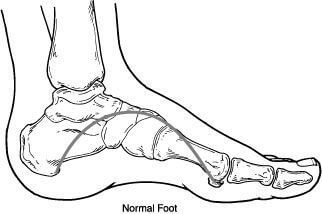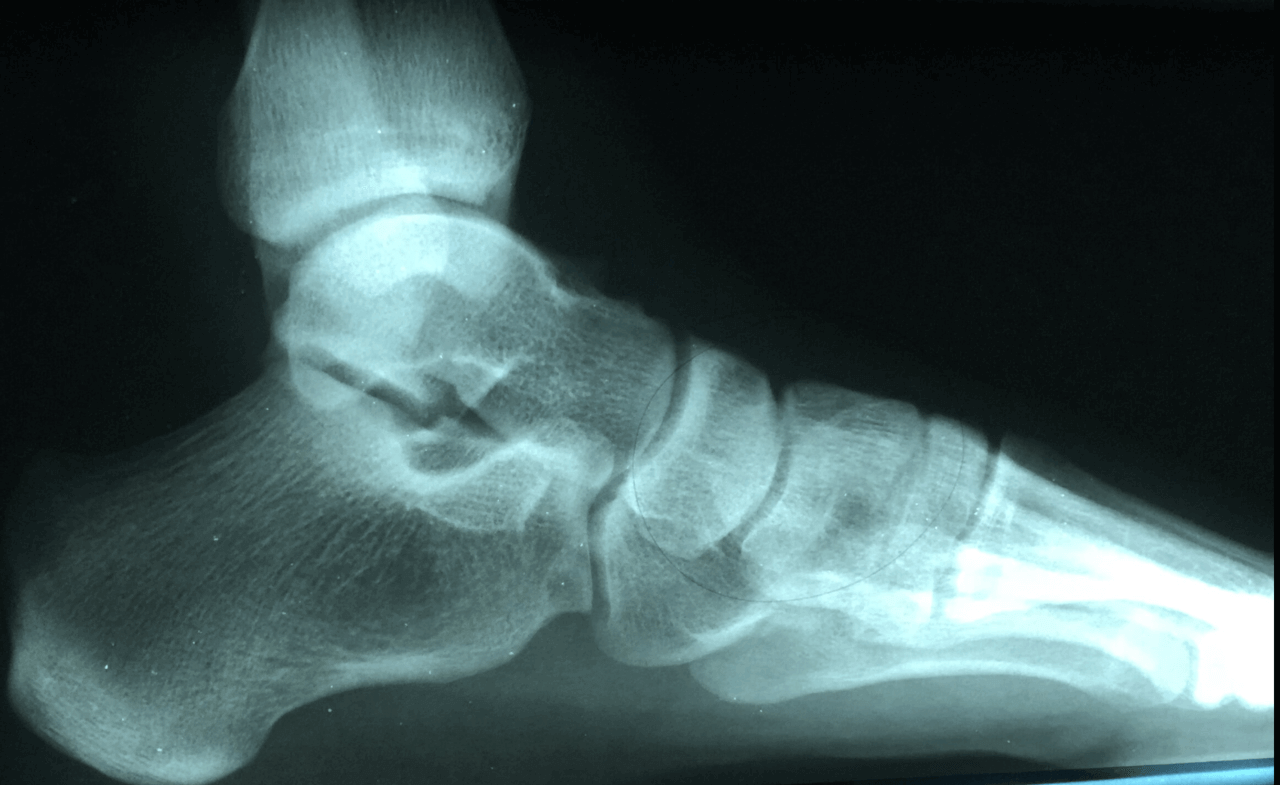heel pain seattle
Displaying items by tag: heel pain seattle
Dr Brandon Nelson, A Board Certified Physician & Surgeon, Discusses ForeFoot Pain or Pain In The Front Of One’s Foot

The front of your foot or the area where your toes begin is called the forefoot. This area consists of your toe bones, your phalanges and your metatarsals, the long foot bones. This area is where you push off when ambulating and provides stability for forward propulsion. This is a complex anatomical area and more than a few pathologies can exist in this location but I will discuss a few of the most common. These include neuromas, capsulitis and stress fractures.
Neuromas are an entrapped nerve that can cause burning and tingling. These usually occur in the 3rd interspace. Most patients have a sensation that is electrical and is worse in shoes and relieved by taking off their shoes and rubbing the forefoot. These seem to be more common in women than men and especially around the 4th-6th decade of life. Neuromas have some great treatment options available one of most successful is dehydrated alcohol injections. The success rate with these injections approaches 89%.
Capsulitis is a term we use to describe inflammation of a joint. This most commonly occurs in the metatarsophalangeal joint of the foot. We tend to see this in a patient with a bunion or high arched foot. The main cause seems to be a biomechanical imbalance. It is important to get an x-ray with capsulitis as arthritis can have a similar presentation.
Stress fractures usually present with swelling. They often occur as one begins a new training program and can cause pain for weeks. Typically these will be relieved with rest and exacerbated by activity. Most will heal with a change in activities and calcium supplementation. However again an x-ray is warranted to rule out other pathologies and to monitor healing.
If you are having forefoot pain I can help. Schedule an appointment with Dr Brandon Nelson, give us a call at 425-391-8666 or make an appointment online.
Sincerely,
Board Certified Physician & Surgeon
Dr Brandon Nelson, A Board-Certified Physician & Surgeon Discusses Heel Pain That Will Not Go Away

Heel pain is by far the most common thing I see in the office. The number one cause is still being plantar fasciitis. Most patients with heel pain will have resolution of their pain within a month of seeing me. However, there is a small percentage of patients that do not get better and further work up is warranted. We call these patients the outliers or red herrings. There are about 2 main causes of outliers or red herrings. These are nerve issues, i.e., Baxter’s neuritis or a stress fracture.
Baxter’s neuritis is not as common as plantar fasciitis. It is basically an entrapment of a nerve near the heel. The nerve becomes irritated and compressed. The symptoms can be similar to plantar fasciitis. The most common symptom seems to be burning in the heel. Burning or tingling are often associated with nerve pain. Usually, a nerve conduction study is required to diagnose this entrapment. Once it is diagnosed sometimes a local injection of the nerve can help or a prescription orthotic to offload the area can be quite helpful. Baxter’s neuritis differs from a stress fracture in presentation usually.
A stress fracture of the heel bone or calcaneus both can cause heel pain however usually in different areas. With the stress fracture it is usually a constant pain that is a dull ache or throb. Additionally, there is often an increase in training that has resulted in a stress fracture. Usually, a stress fracture will require an MRI and most resolve with time and protected weight bearing. If you are suffering from heel pain, especially if it has been going on for more than a couple weeks I can help. If you are experiencing foot or ankle pain, give us a call at 425-391-8666 or make an appointment online.
Sincerely,
Dr. Brandon Nelson, A Board Certified Foot & Ankle Surgeon, Discusses Numbness and Tingling In Your Toes

Numbness and tingling can be quite common in people experiencing forefoot discomfort. Most people will describe symptoms like burning, pinching, numbness and tingling. These are often associated with nerve type issues and can continue to get worse without treatment. The most common causes of this in the foot are neuromas and capsulitis.
Neuromas are a nerve irritation that occurs in the foot and usually is a female between the ages of 40-60. The nerves that run between the toes are sensitive and any increases pressure can cause pain. This pain is usually made worse with tight fitting shoes or high heels. Patients usually have pain to the 3rd and 4th digit and often is only on one foot. Most people will say that rubbing the front of their foot seems to help as well as removing their shoes.
Capsulitis is usually around the base of the 2nd toe. There is often an underlying deformity like a bunion or tight calf muscle. Patients will often experience swelling and tingling or digit. It is usually made worse with walking and relieved with icing.
Neuromas and capsulitis both can be challenging for the patient and the doctor. It is important to identify the root cause and an x-ray is warranted. The treatment options available are usually very successful. If you are having forefoot pain we can help, make an appointment today.
Give us a call at 425-391-8666 or make an appointment online today.
Dr. Brandon Nelson Discusses the Most Effective Long Term Treatment Techniques To Get Rid Of Heel Pain & Plantar Fasciitis For Good

Recent literature has proven that about 10%-20 of American adults will experience heel pain. Heel pain whether it is causes by plantar fasciitis, bursitis or a stress fracture can be challenging to treat. With constant use the foot and ankle rarely have time to recover from the constant pressures of walking. This can make heel pain and plantar fasciitis very difficult for many people.
If you are experiencing pain in the bottom of your foot, especially in the morning it could be plantar fasciitis. Often times patients will describe a bruised type feeling or tightness that loosens up with walking but returns at the end of the day. Some people will feel a numbness or tingling in the foot or even a burning. It is important to have a foot and ankle physician evaluate your foot before initiating treatment.
Treatment for heel pain focuses on finding the underlying causes. The majority of people with heel pain have a tight calf muscle. One of the best long term strategies is to begin a calf stretching program. I like to have my patients stretch 3 times a day and spend a couple minutes on the muscles of the calf. Another great option at home is to ice and rest.
Our clinic Issaquah Foot & Ankle Specialists has one of the most advanced protocols that is based on current research to fix heel pain permanently. The majority of patients we see have a greater than 50% reduction in symptoms in less than 1 week and a long term success rate of almost 98%. We focus on the underlying process that is creating the inflammation and help the body to recover and repair the heel pain. Our methods do not require and period of non-weight bearing and have treated thousands of patients. If you are suffering from heel pain call us at 425-391-8666 or make an appointment online today.
Dr. Brandon Nelson Discusses Heel Pain in Children

I currently have two children and actually have had one that was experiencing some heel pain. It was pretty classical symptoms of apophysitis or what we call Sever’s disease which is and inflammation of the growth plate. Kids often present with this type of pain after activities or after going barefoot. Most commonly we see this in young girls between the ages of 8 and 14 and young boys between the ages of 12 and 16. This is when kids often experience a growth spurt and the growth plates can become quite inflamed.
This inflammation of the growth plate can often be seen on x-ray and I highly recommend kids with heel pain get an x-ray. There are many great modalities that work well. I recommended starting with ice and stretching in the calf. However, I would discourage parents from doing home therapies until an accurate diagnosis is made. If your child is experiencing some heel pain we would like to help.
Give us a call at 425-391-8666 or make an appointment online today.
Dr Brandon Nelson Discusses Heel Pain after Walking

There are many sources of heel pain. Heel pain can be caused from a bone spur, stress fracture or the most common reason plantar fasciitis. Plantar fasciitis is caused by inflammation within your plantar fascia which is a big thick ligament like structure that supports the bottom of your foot. The fascia begins in your heel and runs to your toes.
This is why the most common spot for heel pain is right where the fascia attaches to your calcaneus or heel bone. With an increase in exercise or walking we see more stress on the fascia. This in turn can begin to create and inflammatory cycle and the beginning of plantar fasciitis. One of the best things we can do in the beginning is to stretch your calf muscles. I recommend stretching at least 3 times a day for about 2-3 minutes each session. One must make sure to stretch both the gastroc and soleous muscles.
If you are suffering from heel pain or plantar fasciits we can help. Give us a call today at 425-391-8666 or make an appointment online.
Dr. Brandon Nelson Discusses That Terrible Pain in Your Foot That Occurs in the Morning

Getting up in the morning is hard enough without adding foot pain. Many patients present to our clinic with morning pain or first step pain that has been present for months. I believe this has to be a very challenging way to start your day and I empathize with anybody that suffers from this. The most common cause of morning pain or first step pain is plantar fasciitis, heel pain or bone spurs. Typically once calf muscle and plantar fascia have a chance to relax with sleeping a contracture occurs. This contracture makes for a tight fascia and heel cord so that when patients steps down after sleeping or after resting that tightness creates pain.
This morning or first step pain can create a cycle of chronic pain making plantar fasciitis hard to treat. I really encourage my patients to do a significant amount of calf and plantar fascia stretching. It is very important for patients to work on overall tightness of your calf and facia, utilizing tools like a foam rolling, calf stretching techniques or a theraband can help. I also encourage early intervention by a foot and ankle physician to avoid chronic fasciitis. Once patients reach a chronic fasciitis state can be extremely challenging and frustrating for both the patient and physician alike. At Issaquah Foot and Ankle Specialists, we pride ourselves on utilizing the most advanced treatments available to cure plantar fasciitis once and for all. If you’re suffering from morning pain or plantar fasciitis, give us a call at 425-391-8666 or make an appointment online today.
Dr. Brandon Nelson Discusses Understanding Plantar Fasciitis

Heel pain, plantar fasciitis or heel spurs can be extremely painful and uncomfortable for patients. A large percentage of the patient population we see at our clinic is for heel pain. Plantar fasciitis is extremely common as the literature reports as high as 60% of American adults will experience it at some point. The most common symptoms associated with heel pain are pain in the morning or a bruise throbbing type sensation in the heel. Often times patients come and wonder what caused the plantar fasciitis. Plantar fasciitis often originates with increased activity levels or increased stress on the foot structure.
Your plantar fascia is the main supporting network of the foot and people that have flatfoot for tight calf muscles are often predisposed to developing heel pain. Heel pain often starts slowly and begins to progress with time. The most important thing to understand in treating heel pain is to have it treated early. We find it much easier to get rid of it permanently if patients present earlier in the inflammatory process. The ultimate goal is to prevent it from becoming a chronic injury that can take months to get better. If you’re suffering from heel pain or pain when you get out of bed in the morning or after prolonged periods of walking, please give us a call at 425-391-8666 or make an appointment online and we will help you.
Dr. Brandon Nelson Discusses How To Stop Heel Pain And Plantar Fasciitis Once And For All

I’m still constantly surprised on a daily basis how many people live with chronic heel pain. Plantar fasciitis or heel pain can be so challenging for patients and really be detrimental to their life. I see a lot of patients that have suffered for years and years from heel pain and have seen multiple physicians and are still having pain. I empathize with these patients and understand their frustration as this can really impact their life and the things they want to do. Having suffered from plantar fasciitis and heel pain myself and knowing how it impacted my life, I really enjoyed treating heel pain patients.
I now important it is for me to maintain an active and healthy lifestyle and I really want to provide this for my patients as well. Often times the majority of heel pain gets treated as plantar fasciitis when there are quite a few other pathologies that can cause heel pain. I can’t stress enough compounded is to find the underlying causes of heel pain which allows proper treatment plan to occur. If you suffer from heel pain for plantar fasciitis and are continuing to suffer please make an appointment or give us a call today at 425-391-8666 today and we will help you stop it once and for all.
Dr. Brandon Nelson Discusses Causes of Children’s Heel Pain

At Issaquah Foot & Ankle Specialists we are the leaders in treating pediatric patients. We are the number one referral center for Pediatricians that are looking for a foot and ankle specialist. We have over 40 years of experience treating pediatric patients. The most common presentation we see is a child with heel pain. Kids begin to present with heel pain as sports start back up, especially soccer and basketball.
Typically children relate a pain that wraps around the back of their heel that often feels like a bruise and gets more painful with activities. Sometimes there is a family history of heel pain in a brother or sister or even mom and dad. I encourage parents to have their child examined as there are many causes of heel pain and those should be ruled out. Apophysitis or Sever’s Disease can be the cause of heel pain in children. This is a type of growth plate irritation that can be extremely uncomfortable. However, it should be noted that there are other causes and I would stress that parents should have their child evaluated before beginning treatment for apophysitis. If your child is suffering from heel pain give us a call today at 425-391-8666 or make an appointment online and we will help.



